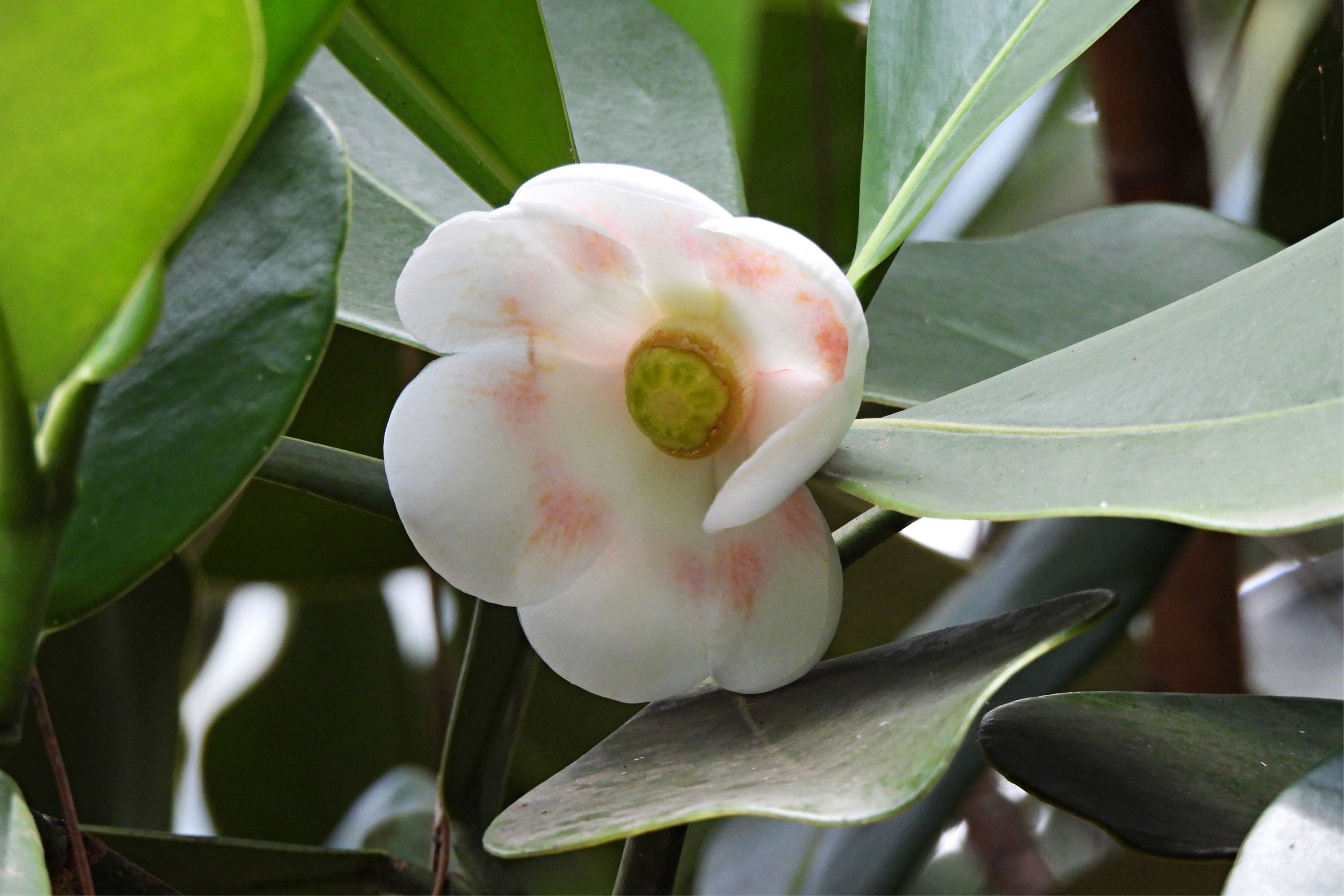Autograph tree
(Clusia rosea)

Description
Clusia rosea, also known as the autograph tree or pitch apple, is an evergreen plant species belonging to the Clusiaceae family. It is a popular ornamental plant that is widely cultivated in tropical and subtropical regions around the world. Clusia rosea is native to the Caribbean and Central and South America, where it grows in a range of habitats, from coastal swamps to upland forests. Description and Morphology Clusia rosea is a small to medium-sized tree that can grow up to 20 meters tall in the wild, but typically reaches a height of 5-10 meters when cultivated as an ornamental plant. The tree has a dense, spreading crown with a broad, round canopy that provides ample shade. The bark of the tree is thick, rough, and fissured, with a reddish-brown color. The leaves are simple, leathery, glossy, and elliptical in shape, with a length of about 5-10 cm and a width of 2-5 cm. The leaves are dark green on the upper surface and paler green on the lower surface. The leaf veins are prominent and raised on the lower surface of the leaf. The leaves are arranged in an opposite pattern along the stems. Clusia rosea is a unique plant in that it produces its flowers and fruits within a large, woody capsule known as a syncarp. The syncarp is large, round, and fleshy, with a diameter of up to 15 cm. The flowers are small, white, and inconspicuous, but are followed by the development of large, woody fruits that contain many seeds. The fruits are hard and woody, and can take up to a year to mature. Cultivation and Propagation Clusia rosea is a hardy plant that can tolerate a wide range of soil conditions, from sandy to clay soils. It prefers well-drained soils that are rich in organic matter. The plant also requires full sunlight to partial shade to thrive. Clusia rosea can be propagated by seed, cuttings, or air layering. Seed propagation is the most common method used to propagate Clusia rosea. The seeds are sown in a well-drained seedling mix and kept in a warm, humid environment until they germinate. The seedlings can then be transplanted into larger pots or directly into the ground. Cutting propagation is also a popular method used to propagate Clusia rosea. Stem cuttings about 10-15 cm long are taken from the mother plant and dipped in a rooting hormone before being planted in a well-draining potting mix. The cuttings should be kept in a warm, humid environment until they develop roots and can be transplanted into larger pots. Air layering is another method used to propagate Clusia rosea. This method involves wounding a stem, wrapping it with sphagnum moss, and covering it with plastic wrap. Roots will form within the moss ball, and the stem can be cut and planted once the roots have developed. Uses and Benefits Clusia rosea is a popular ornamental plant that is grown for its attractive foliage and large, showy fruits. The plant is also used in traditional medicine to treat a range of ailments, including diarrhea, fever, and skin infections. The plant contains a range of bioactive compounds, including tannins, flavonoids, and alkaloids, that are believed to have medicinal properties. In addition to its ornamental and medicinal uses, Clusia rosea is also important in ecological restoration projects. The plant is highly adaptable and can grow in a range of habitats, including the Bahamas, Hispaniola (such as in Los Haitises National Park), Cuba, Puerto Rico, and Florida.
Taxonomic tree:







